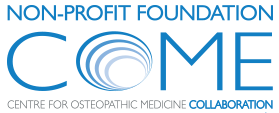Use of pressure dynamometer in the assessment of the pressure pain threshold in trigger points in the craniocervical muscles in women with unilateral migraine and tension-type headache: An observational study
Background
Tension type headache (TTH) and migraine are the most prevalent types of primary headaches with central sensitization and myofascial dysfunction linked to their chronicity. Osteopathic manipulative treatment (OMT) is used in the care of headache sufferers; however, there is a scarcity of high-quality evidence to determine the effectiveness of this intervention, and its underpinning biological correlates.
Objective
The objectives of this observational study were four-fold. Firstly, to estimate the PPT in diagnosed trigger points in craniocervical muscles in women with unilateral migraine or tension-type headache compared to asymptomatic women. Secondly, to assess between-group differences in PPT and pain intensity. Thirdly, to assess the impact of headache on quality of life (QoL) using the Headache Impact Test 6 (HIT-6) questionnaire on unilateral migraine and tension-type headache sufferers. Finally, to assess links between QoL, PPT, VAS and the score in the temporomandibular disorder screening questionnaire (TMDSQ).
Method
A sample of 60 women comprising of 20 patients with unilateral migraine, 20 patients with TTH and 20 asymptomatic were assessed using a portable digital dynamometer for PPT of trigger points found in the Temporalis (4 points), Sternocleidomastoid (6 points), Suboccipital (2 points), and Upper Trapezius (1 point) muscles. VAS was applied when pain was referred on a TP. All participants completed the TMDSQ questionnaire, and the migraine and TTH groups completed the HIT-6 questionnaire.
Results
Migraine and TTH groups presented lower PPT levels in all trigger points studied compared to the Control group (p < 0.01), except for the ECM clavicular TP2L trigger point (p = 0.27). No statistically significant difference between migraine and TTH groups in PPT was found. Migraine and TTH groups showed higher pain intensity in all trigger points compared to Control group (p < 0.01). In the Migraine group, there was a positive association (r = 0.47, p < 0.05) between TMDSQ and HIT-6 scores.
Conclusion
Despite a greater impact on the QoL of women with unilateral migraine, there was no statistical difference in the PPT values for both unilateral migraine and TTH groups. In future studies, PPT might be used to monitor the effectiveness of OMT or other therapies in women suffering from unilateral migraine and TTH.







